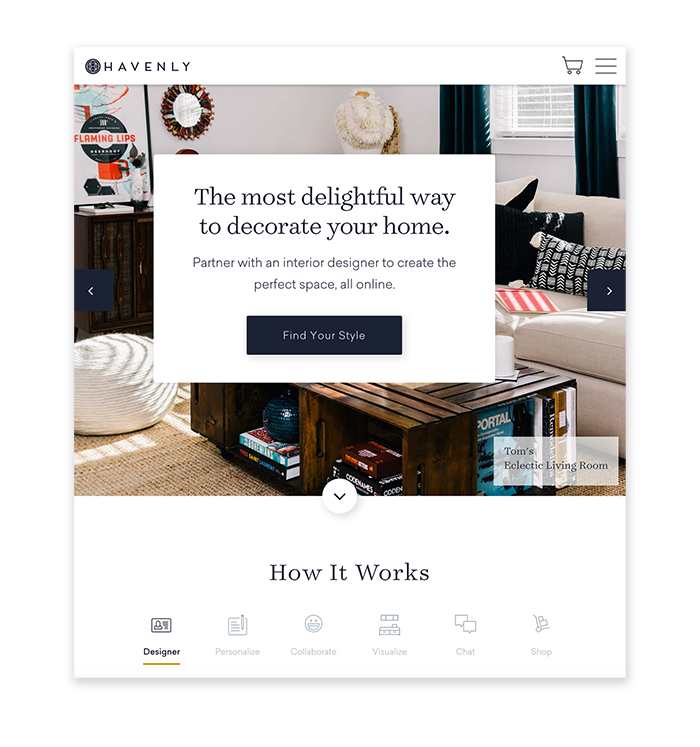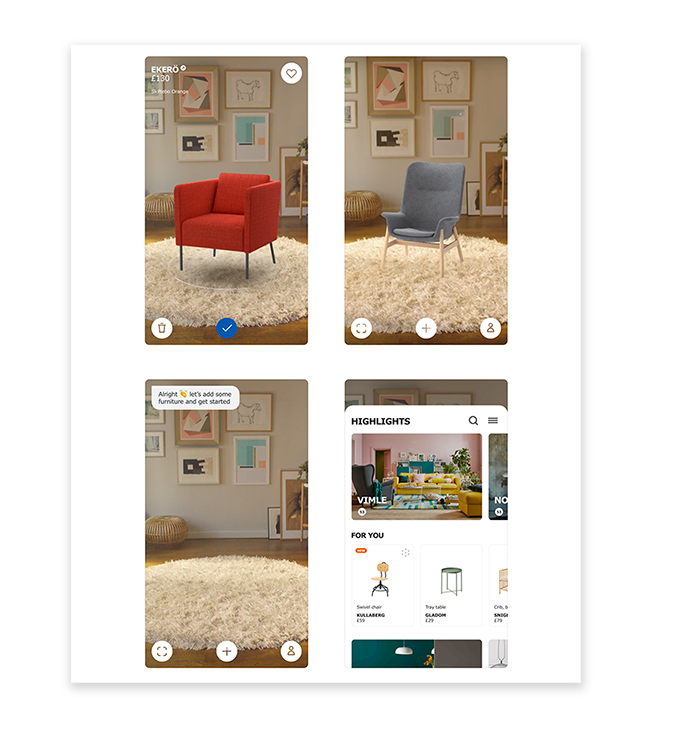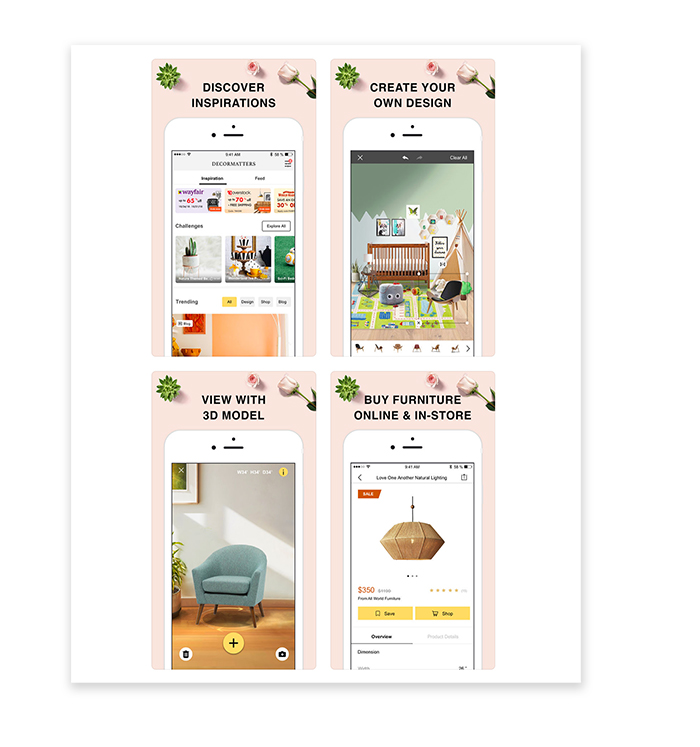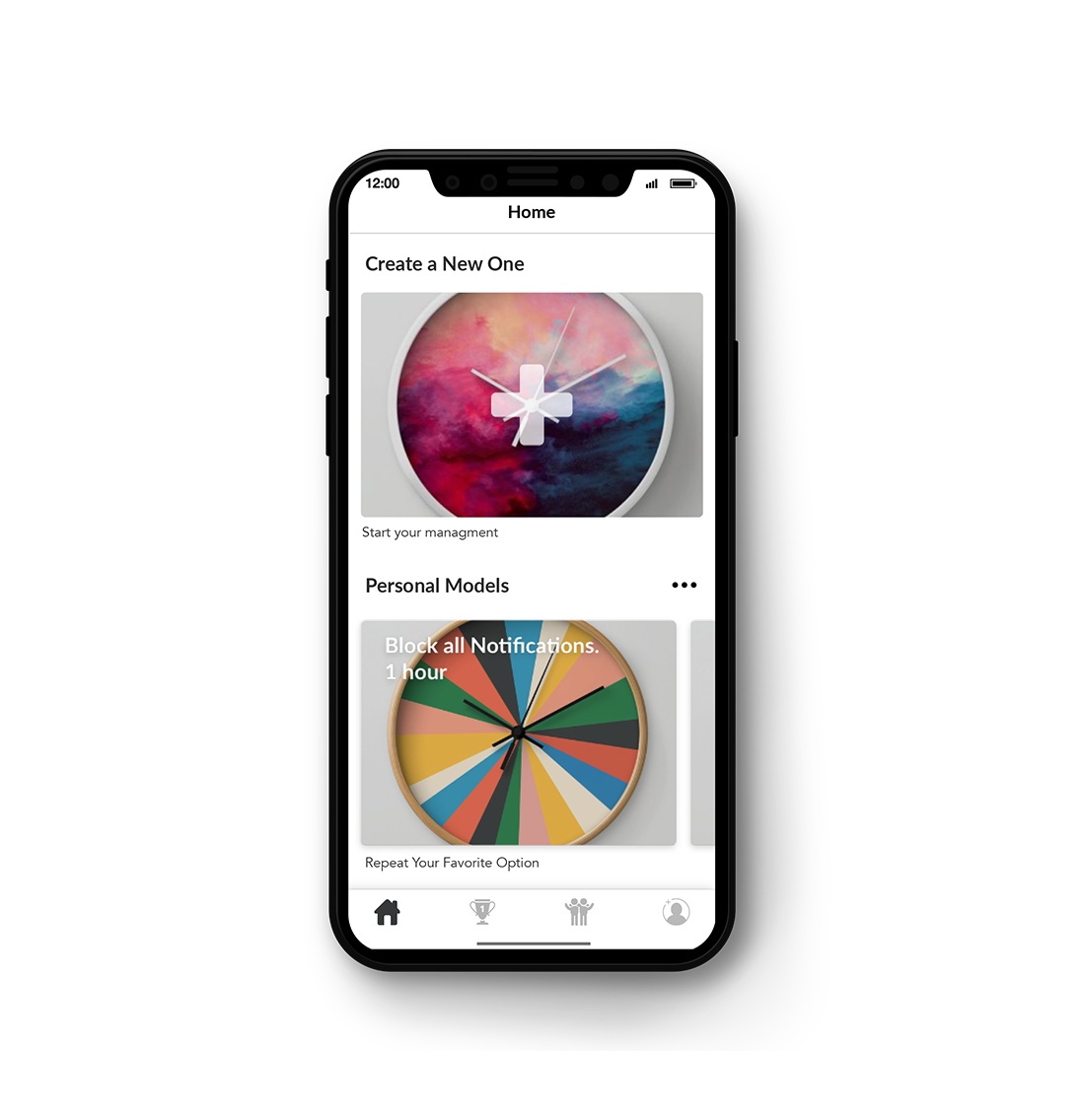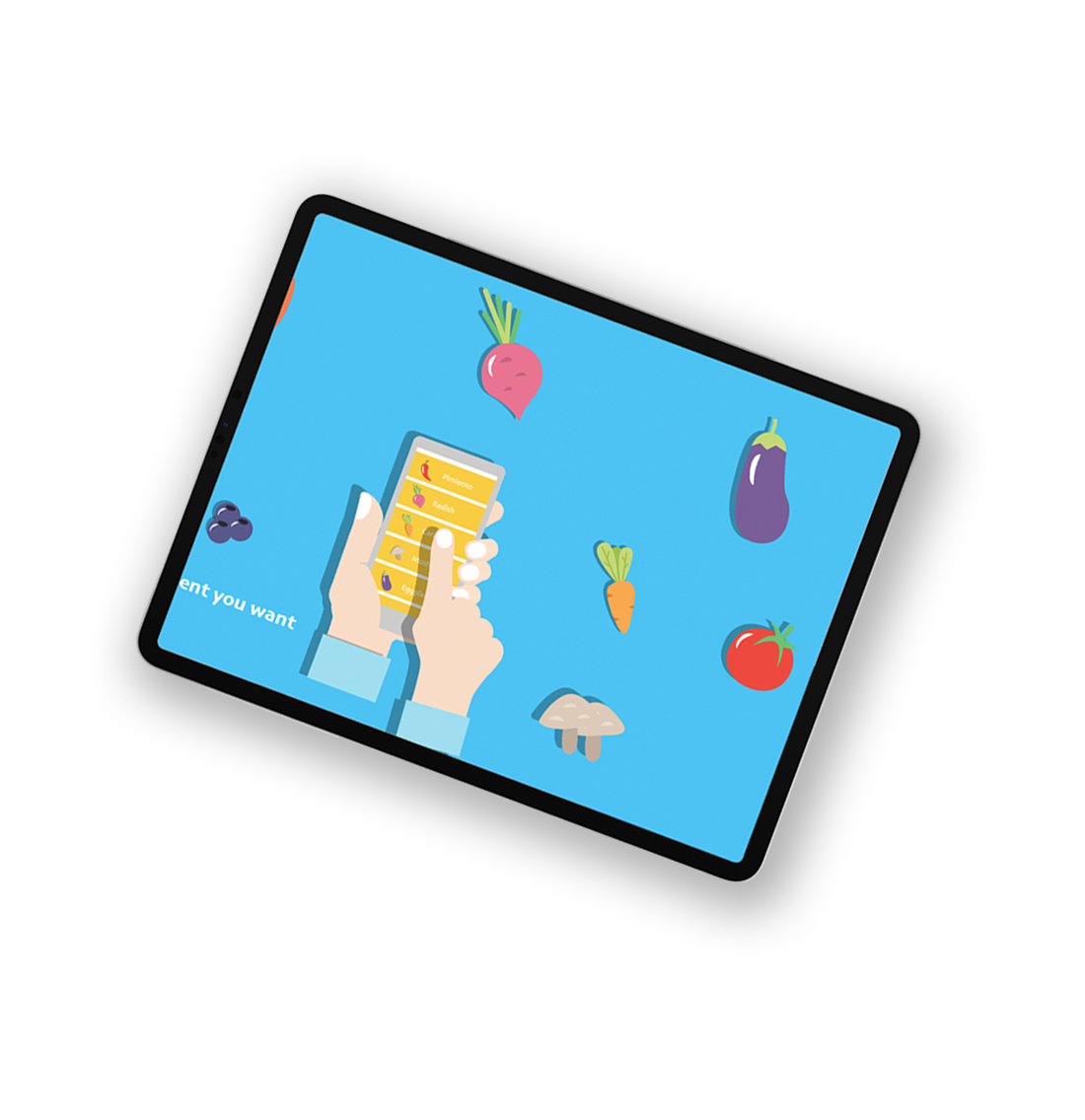Oikos
MAKE YOUR INTERIOR
DESIGN EASIER.
OIKOS is a combination of future technology and real-world technology. It uses the smartphone camera to scan the furniture and the environment and create a virtual simulation model. Users are able to design interior decoration through the visualization function in the model. At the same time, users can also use the OIKOS projector to project the design by AR technology to enhance the user experience.
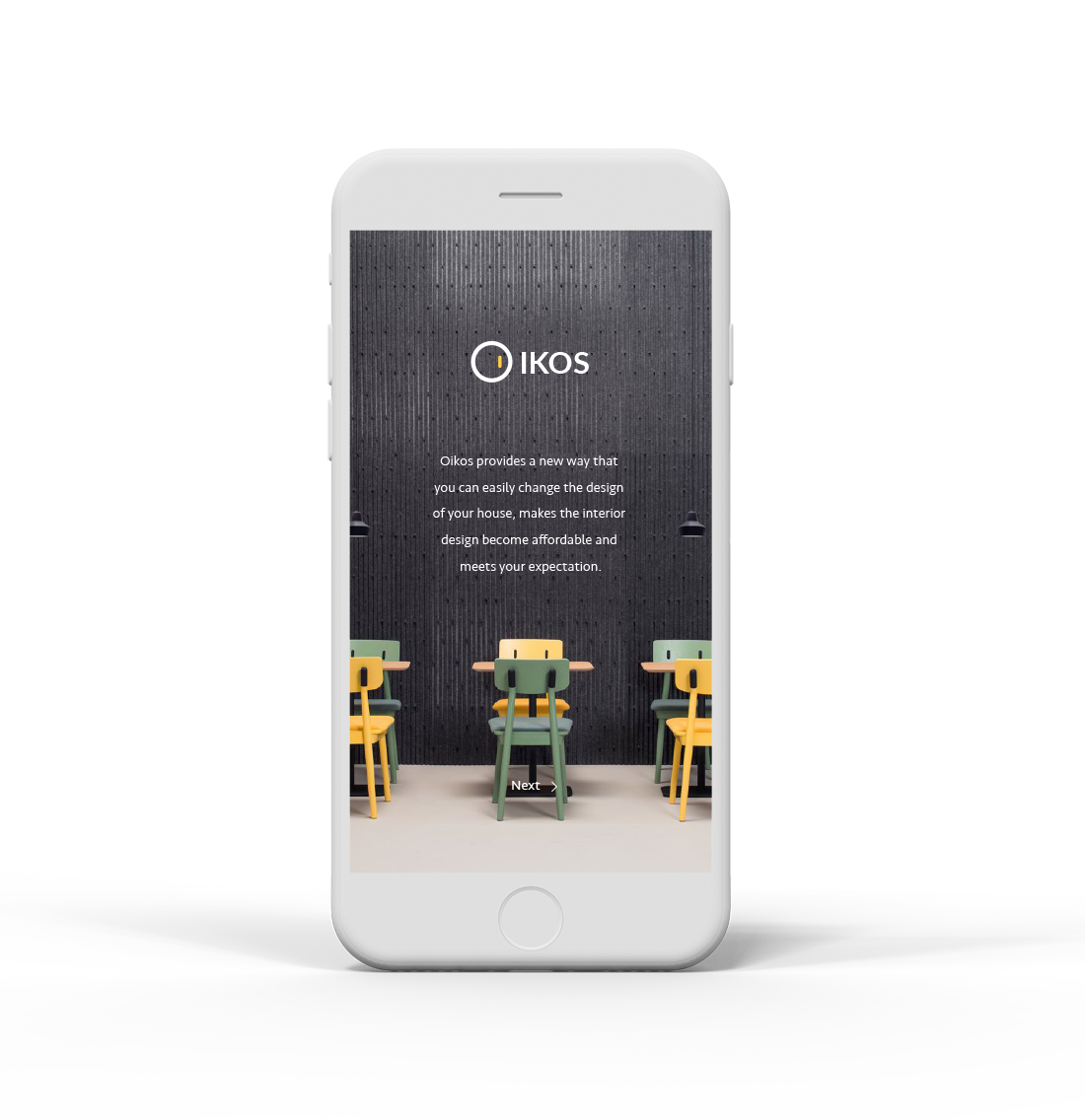
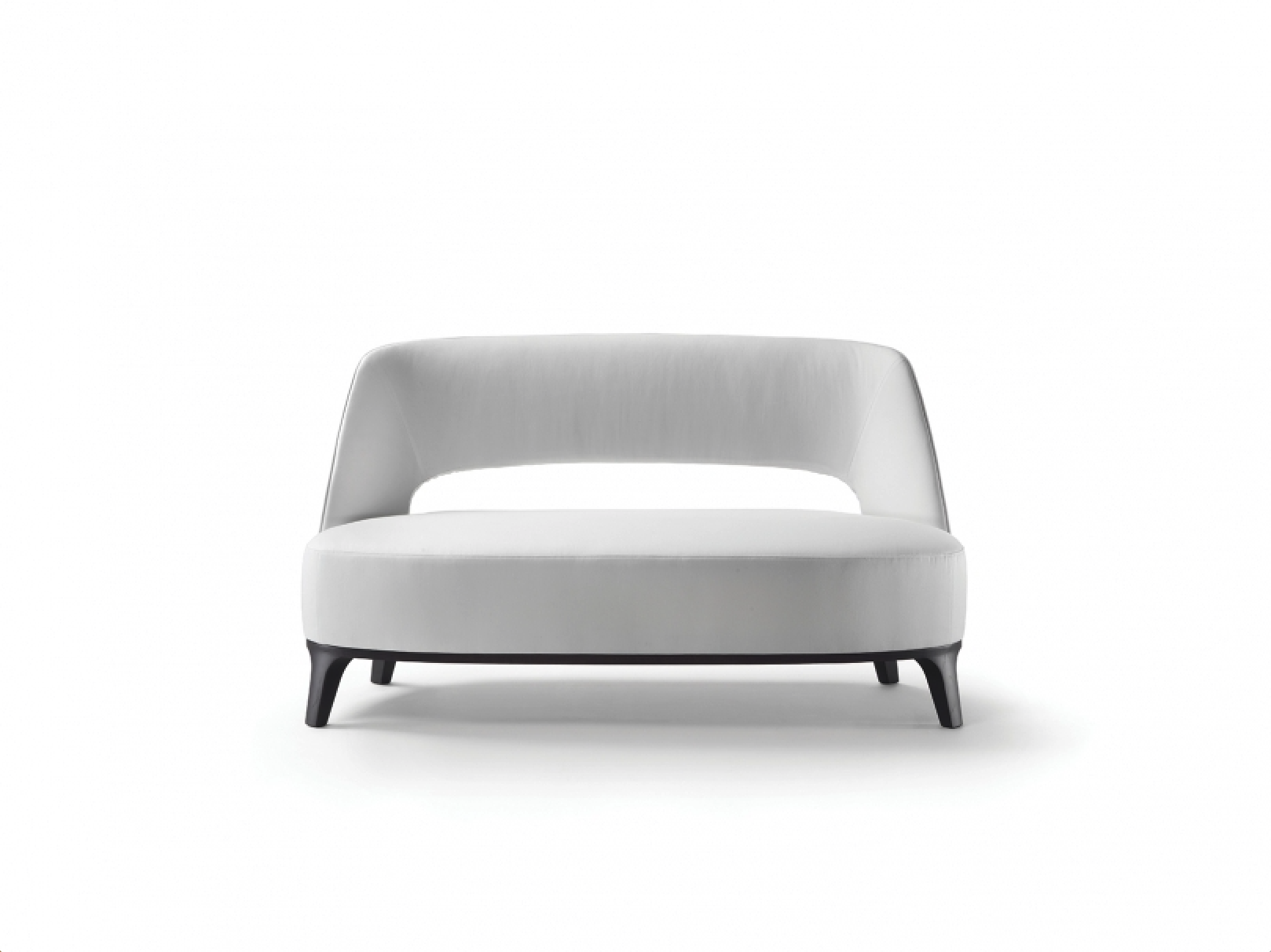
Problem
For new home buyers, renters, and people who need to decorate their homes, most are challenged by how to choose a design. Some people design by themselves, and the final result is not satisfactory. Some people hire professional decorators, but the cost of hiring the designer is expensive and the results are not as good as expected. So how do they get a cheap and satisfying design?
Solution
OIKOS is an application that allows users to design their own interior decoration. It builds a simulated 3D model in an application by scanning live scenes and furniture. Users can add and change the layout of the furniture in the 3D model. The app can visualize the design and help the user choose the design. The app also provides smart decoration advice based on the personal design requirements of the user. Furthermore, the OIKOS projector with AR technology can be used to enhance the user experience.
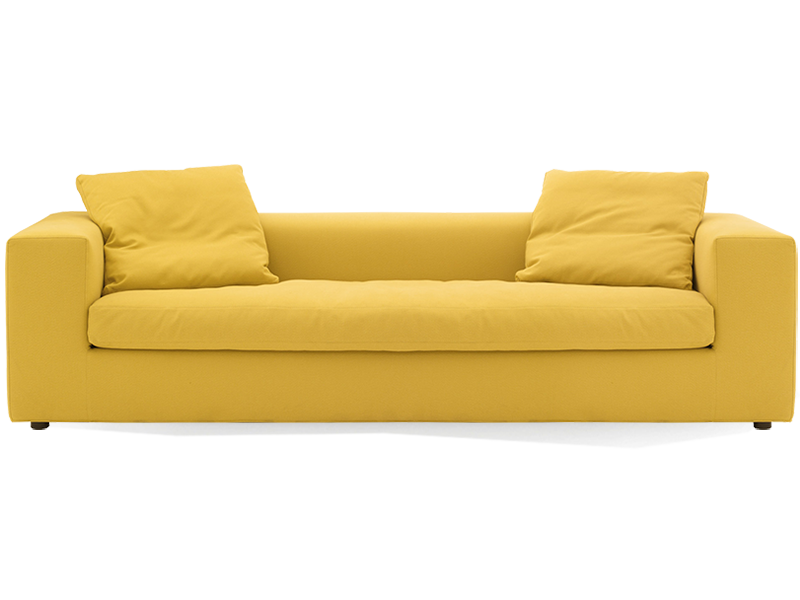
Initial Research
How expensive to hire an interior designer?
The average interior design cost is $4,735, with most homeowners paying somewhere between $2008 and $4927. The most common way to hire an interior designer is via an hourly wage. Prices range from $50 to $150 per hour.
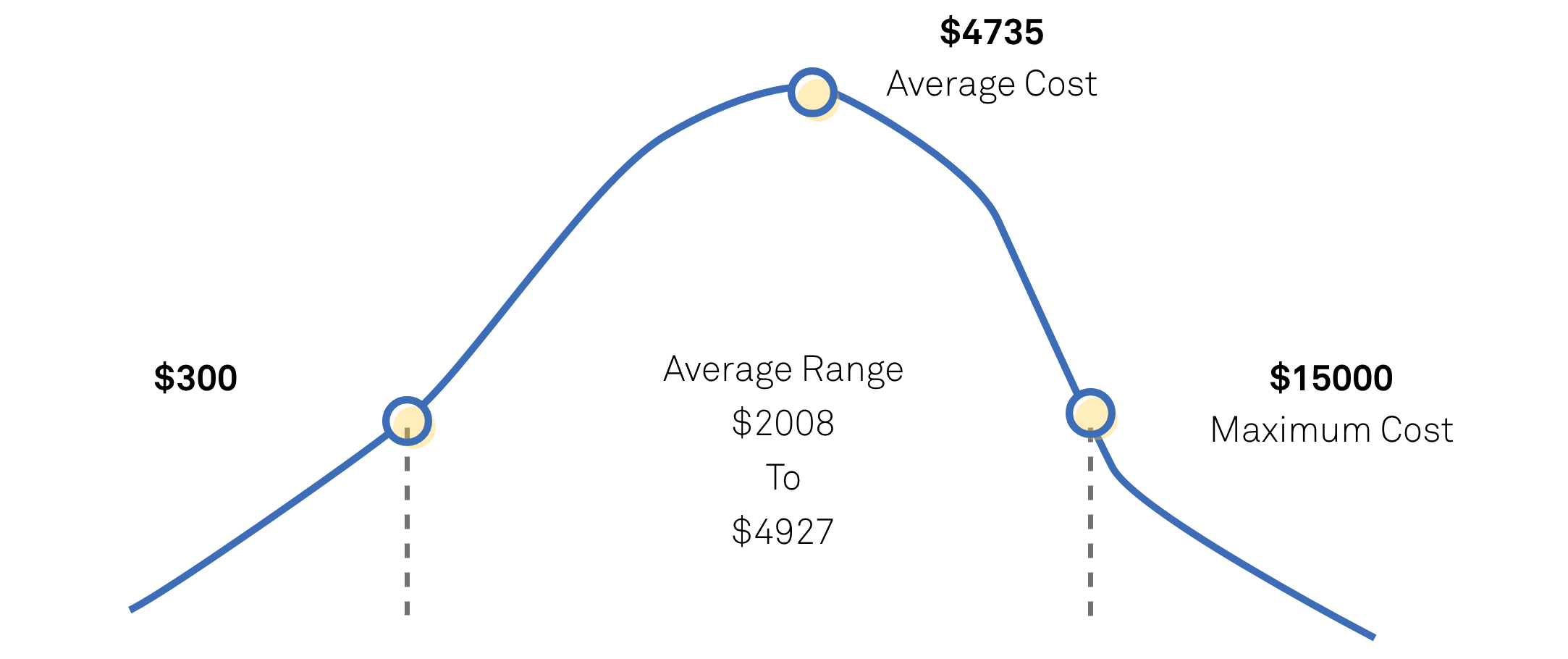
There are roughly 8 million people who need to decorate their homes
According to incomplete statistics, about 5.51 million existing homes were sold in 2017, 1.5 million new rentals were needed, and 0.61 million new homes were sold. We can assume 80% of them have a different variety of decoration needs.
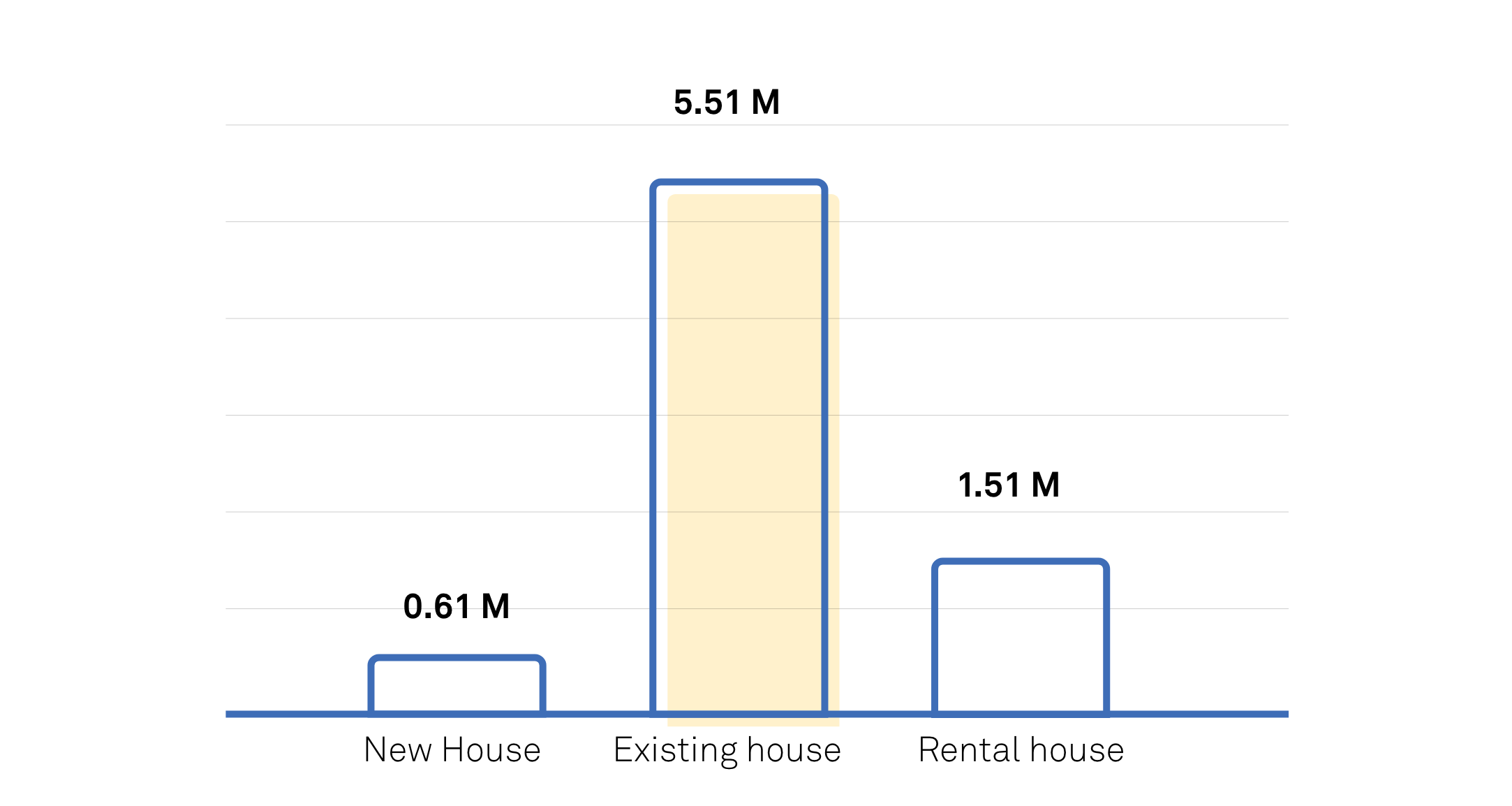
Interviews and Analysis
Most people think that it is not affordable to spend almost $4000.
I did the interviews. Most people like designing the interior decoration by themselves but they are worried about that they are not capable to do it because they are lack of design sense and knowledge. On the other hand, one of the most important reasons is that people who do not have special training are hard to project the 3D object in their mind. So they are hard to judge the design by themselves.
Questions
1. Would you like to spend $4,000 to hire an interior designer to help you design your house?
2. How many people think that they can design by themselves?
3. If they can see the real design, how many people think they can design by themselves?
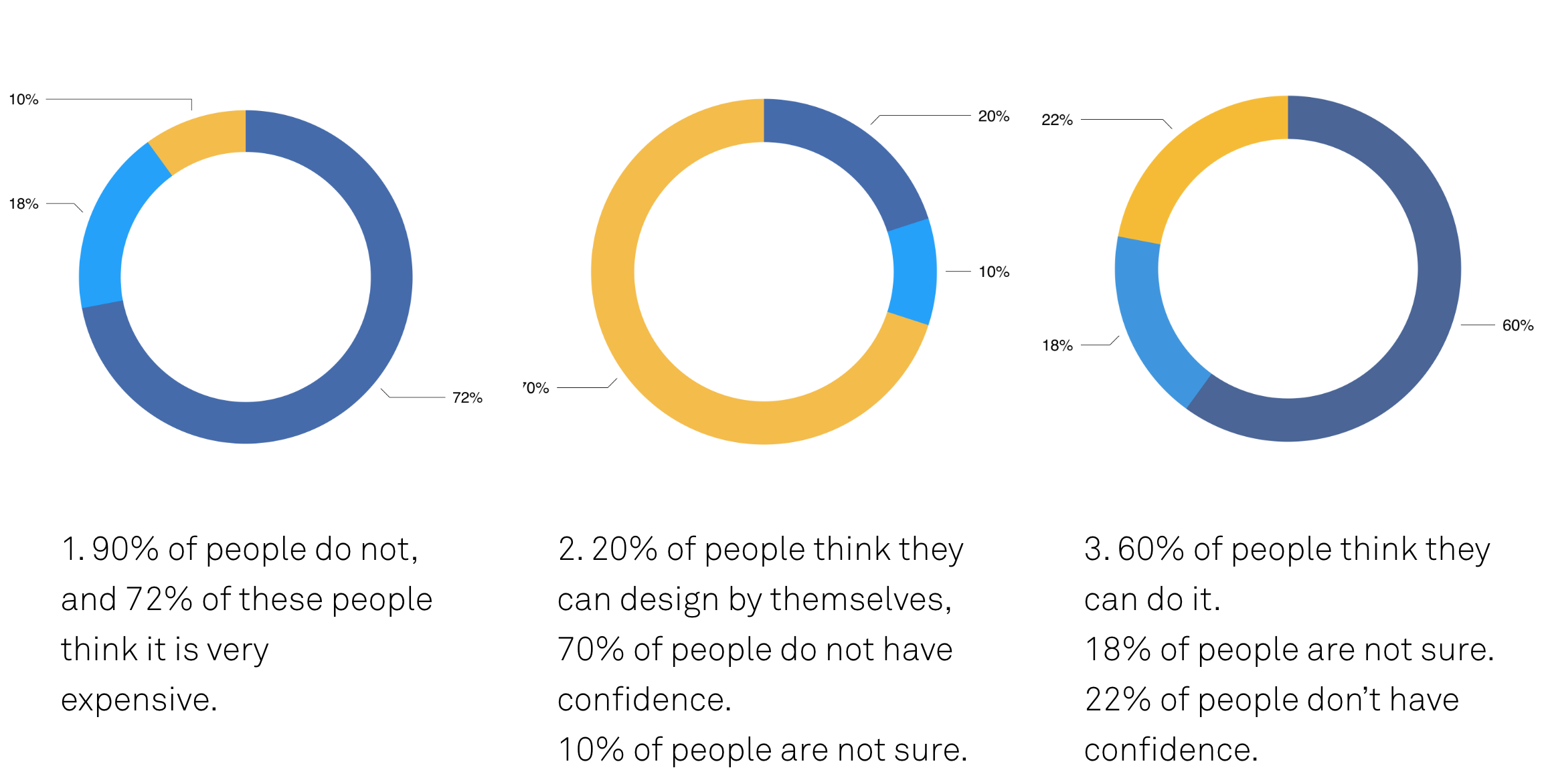
Marketing Research
People prefer to purchase furniture in-store rather than online.
According to the survey "Online vs. in-store shopping preferences of consumers in the United States as of February 2017, by product category". Most people right now prefer purchasing online, especially books, toys, and computers. However, according to the date, most people still buy the furniture in the store. Why?
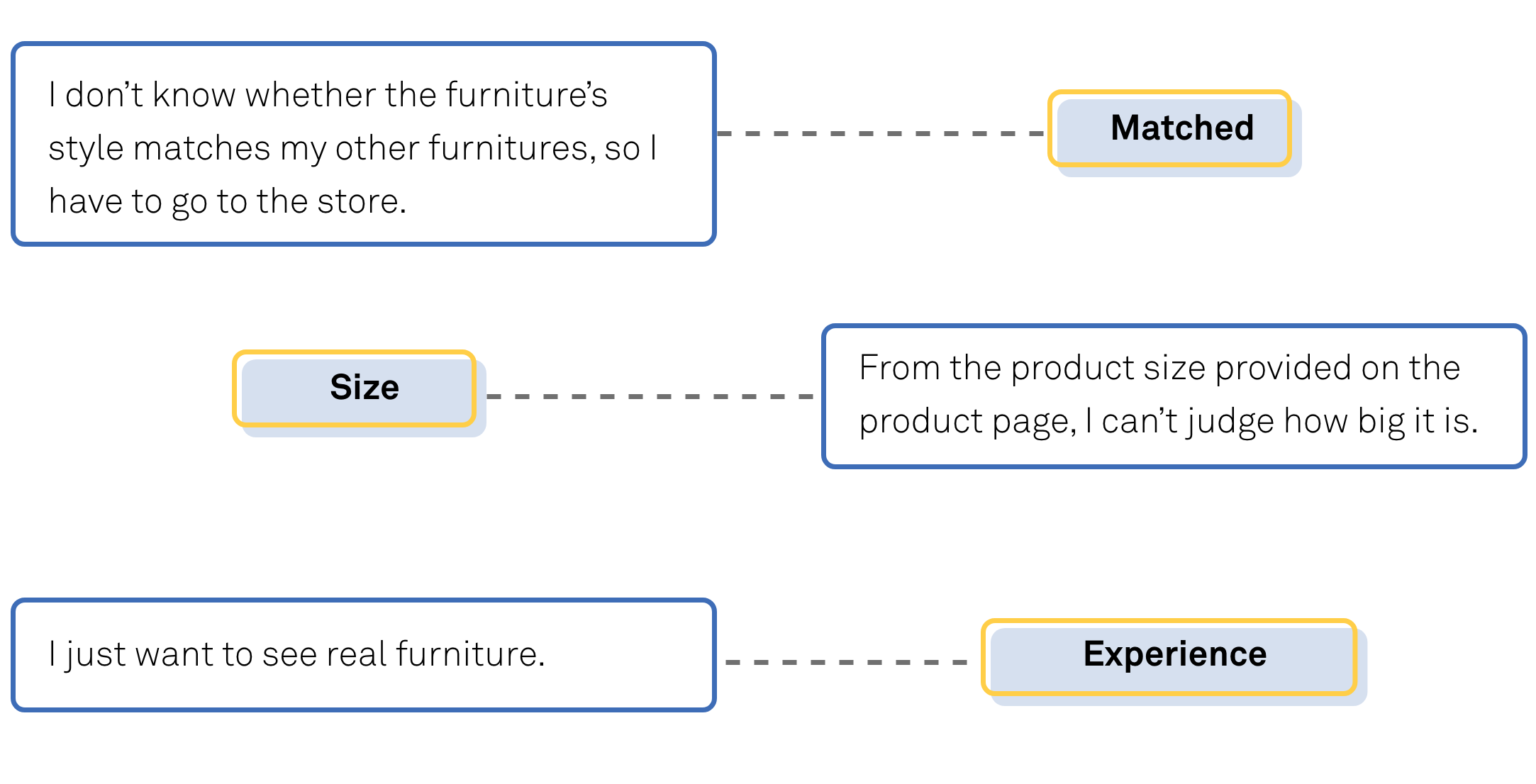
Competitors
Help improve user experience through machine learning.
This is an intelligent data loop recommendation system that enters the user's preferred furniture style, scans furniture or scenes, and builds a 3D simulation model. At the same time, when the user designs the interior decoration, it also provides recommended furniture to help the user. After each design, the mobile phone will learn about the user's preferences through machine learning, and provide more accurate recommended furniture next time.
In addition, the model of the furniture can be linked to the furniture seller to help the user purchase. The mobile phone can also be connected to a smart projector, using ai technology to launch the design.
- Havenly
- Ikea Place
- Decor M
-
Key Features
- The design planning is created by professional designers.
- Good user experience and easy to communicate with the users.
- It can give the best resolution of interior decoration for the users
- The design comes from the designer so that the user has to wait for at least a day.
- No scanning function.
-
Key Features
- Comprehensive futnitures.
- The app is very direct and simple to use.
- It also provides the visual experience as well.
- It is only used in one environment to match the single item, and it can not provide a whole view model to consider whether the size of the furniture is suitable or not.
- Users can not save the design.
- It can not scan the place and save.
-
Key Features
- The fully functional design provides the very helpful user experiences and makes users easier to find out what thefurniture they may like.
- 2. It also provides the visual experience as well.
- There is no smart recommendation about the selection of furniture for the users. Users need to choose all features of the furniture in order to ensure the furniture matches and fits their homes, but it is not easy because there are many varities of furniture on the market.
Design Decision
The reason is that user can not visualize the design like a real scene.
Appreciating beauty is one of the innate talents of humans. Some people haven’t learned graphic design, but they know which poster is better; some people don’t understand the structure of the building, but they can evaluate if the building designed well. so, the AR technology provides a perfect solution for me. My project should include these three use cases.
1. This app should be able to help people design their dearm house and save money.
2. This app should be able to help users purchase the furniture online.
3. It should provide smart recommendations for the user to help them design.
How It works
Help improve user experience through machine learning.
This is an intelligent data loop recommendation system that enters the user's preferred furniture style, scans furniture or scenes, and builds a 3D simulation model. At the same time, when the user designs the interior decoration, it also provides recommended furniture to help the user. After each design, the app will learn about the user's preferences through machine learning, and provide more accurate recommended furniture next time.
In addition, the model of the furniture can be linked to the furniture seller to help the user make a purchase. The mobile phone can also be connected to a smart projector, using AR technology to launch the design.

Persona
Except for the user who has design needs, furniture sales also can be one of my markets
According to the data and interviews, I find most furniture sales have been challenged by the best way to show the furniture to potential buyers. The combination of the phone and smart projector will provide the best user experience.

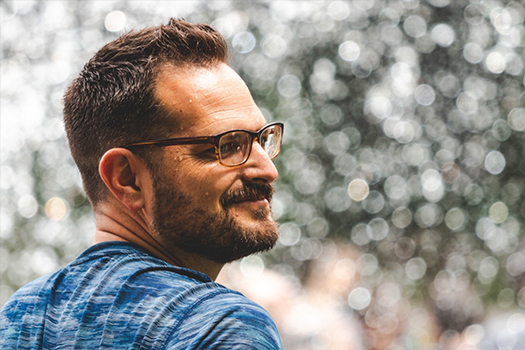

Steven
34
Engineer
San Francisco, CA
John Doe
42
Sales Clerk
San Francisco, CA
Jessica
24
Architect
San Jose, CA
Steve is an engineer in a digital advertisement company. He’s married and has a 3 years old son. They e weekends he always spend the time with his family and friends. He and his wife love to spend a lot of time on decorating their house.
John is a furniture seller and he finds it sometimes difficult to sell furniture to customers because he has no way to help customers choose the most suitable furniture. So he is looking for the better way.
Jessica is an architect working for a big company. She has graduated for one year so that she is very easy and hard work. As a new generation, she likes shopping online especially by the App. She has rented a house with her classmate and she needs to buy some furniture. She needs an efficient way to improve purchase experience.
Task Flows
The phone and projector can work separately or work together.
In the task flow, the orange step represents the workflow in which the mobile phone works with the projector. In fact, the orange part is not a step that must be performed. All task flows can skip it and perform it separately.
Icon Design
I created two types of the icon for the two devices. They both have the same concept but different thinking behind.
The icon on the mobile is designed based on convenience and implementation. The projector is more biased towards abstract behaviours, such as zooming in and out, projection, and so on.
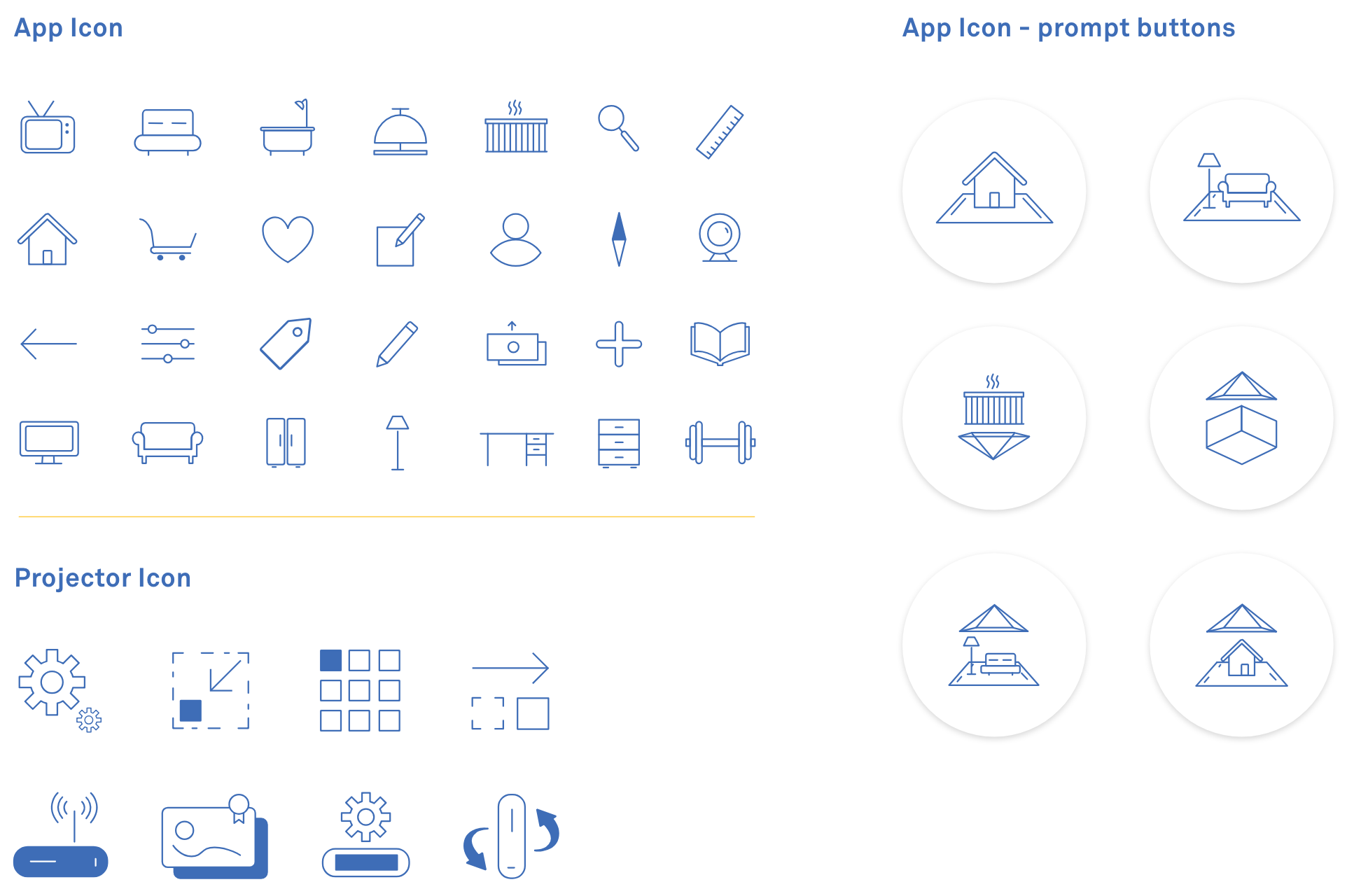
Styleguide and Logo Design
The same color palette of the logo and pages of devices.
Considering the sense of future technology and getting closer to people, I chose a combination of blue and yellow.
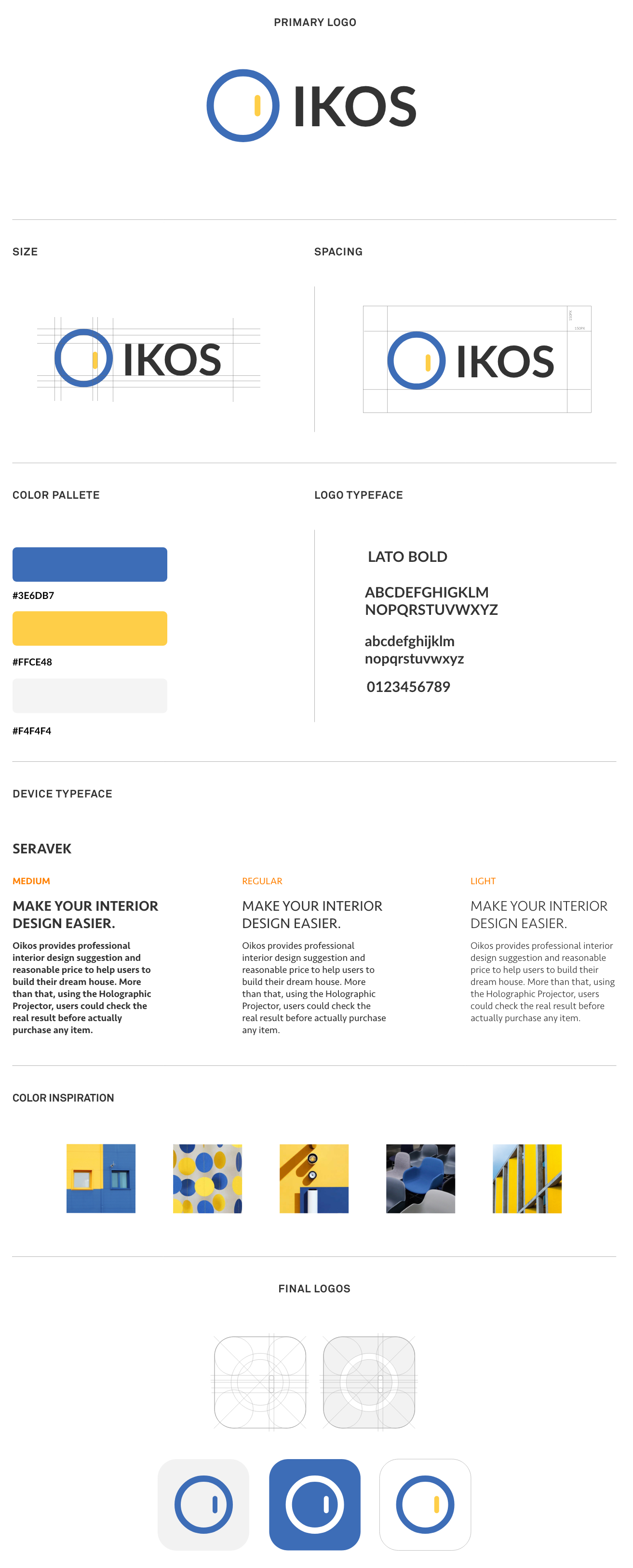
Final Design
The most convenient way for users to get their preferences of decorating.
The most important design principle is how to make users feel comfortable and provide them with personal design in the most convenient way. What we are doing is to minimize users typing and increase the richness of options for the users in order to save time.
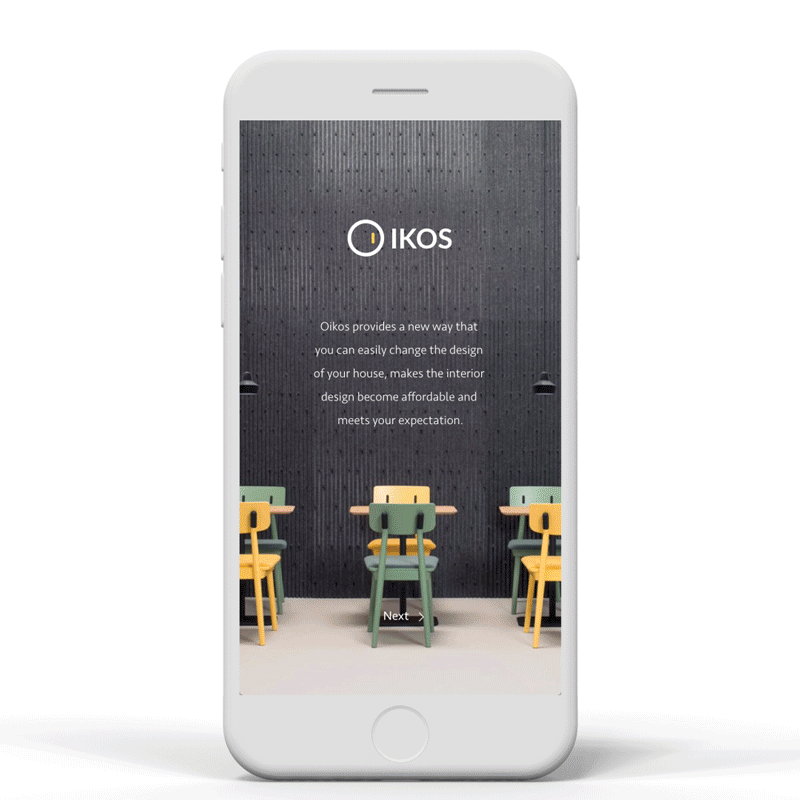
Easier to edit the furniture.
By clicking an item in the place model. users are able to edit the furniture. The furniture is able to be moved, scaled, as well as changed to a new one.
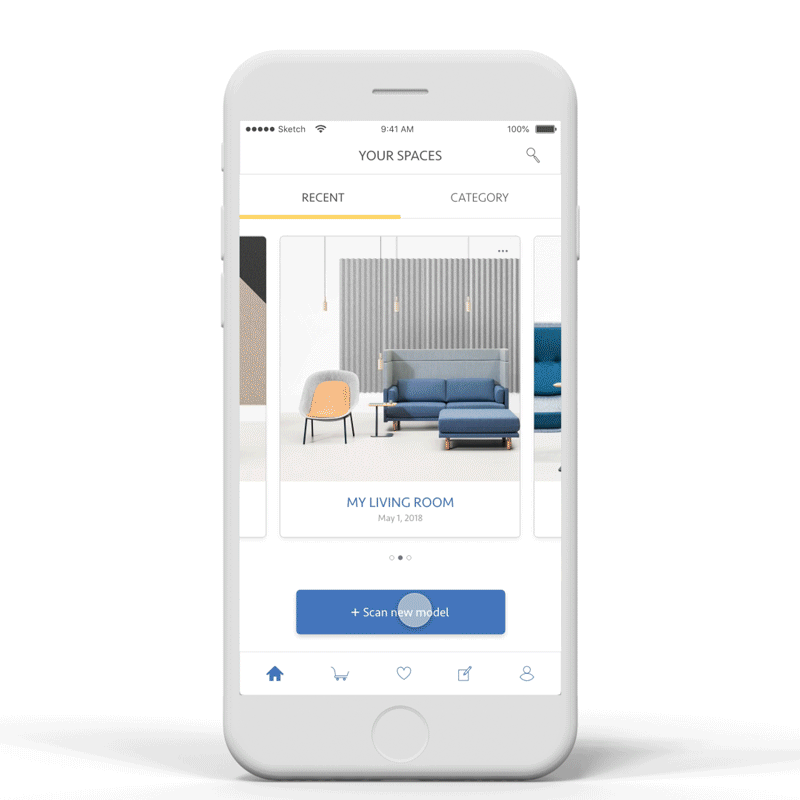
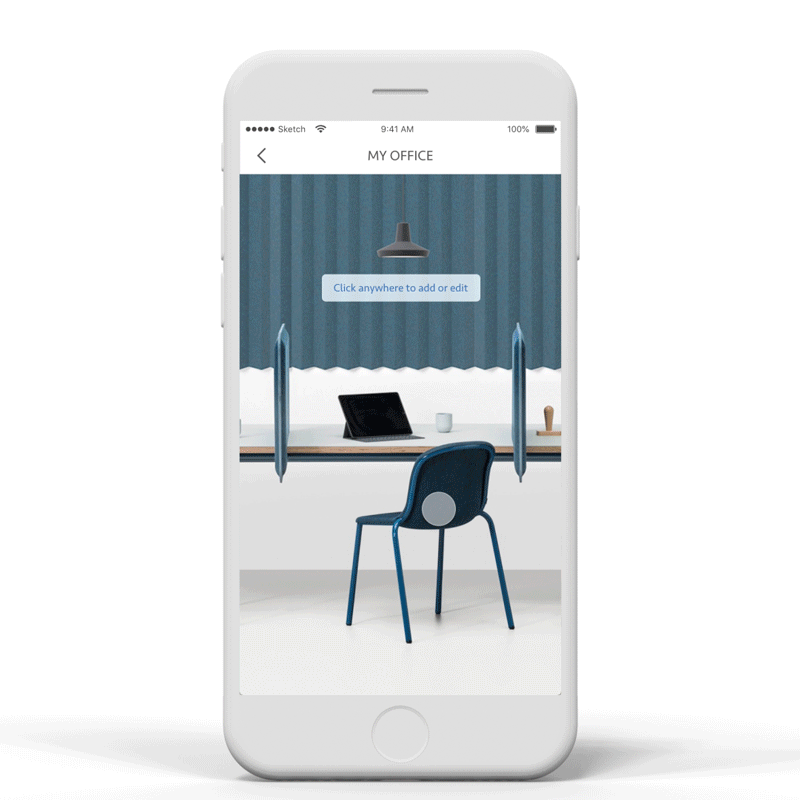
The easiest way to project the furniture.
By clicking an item in the furniture's category and press to project.

